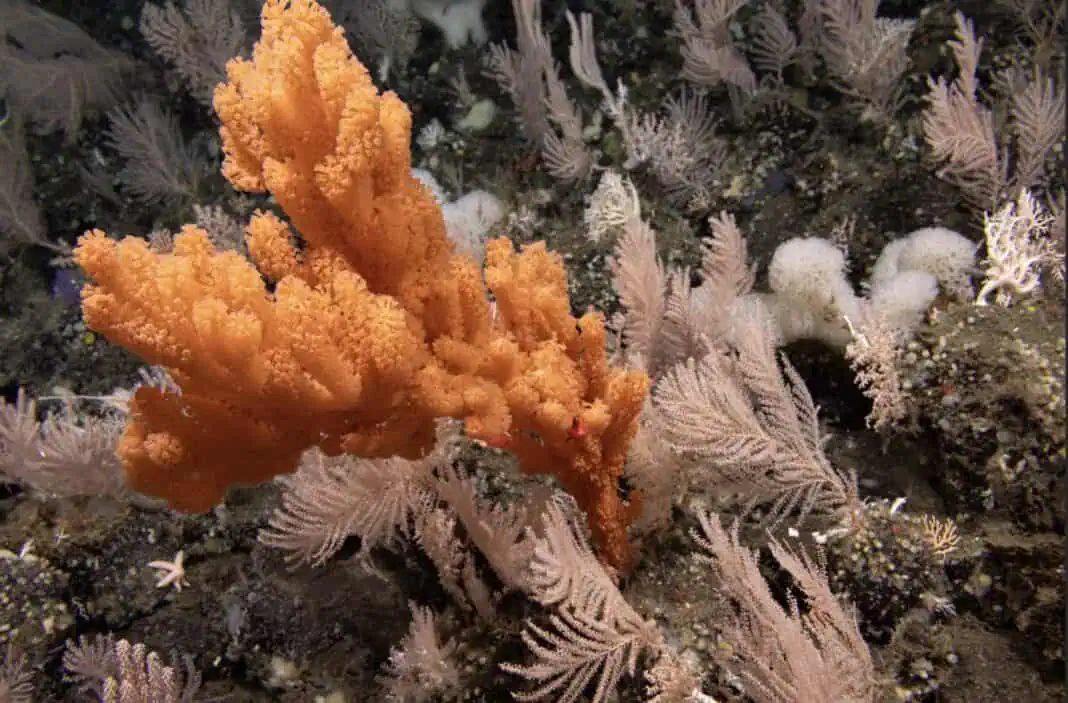A new study reveals that only a minuscule fraction of the deep seafloor has been imaged.
Despite covering 66% of Earth’s surface, the deep ocean remains largely unexplored. The study, “How Little We’ve Seen: A Visual Coverage Estimate of the Deep Seafloor” and published in Science Advances, is the first to document that, in decades of deep-sea exploration, humans have observed less than 0.001% of the deep seafloor. This total area is roughly the size of the US state of Rhode Island or one-tenth the size of Belgium.
The deep ocean, defined as being deeper than 200 meters/656 feet, sustains diverse ecosystems and provides essential services, including oxygen production, climate regulation and crucial pharmaceutical discoveries, as well as playing a critical role in maintaining the health of the planet.
Yet, despite its importance, research into this immense ecosystem is severely limited, with visual surveys primarily focused on just a few regions and countries. Visual imaging is one of the most critical methods to study the deep seafloor and is one of the three key pillars of ocean exploration, alongside mapping and sampling.
According to Dr. Katy Croff Bell, president of the Ocean Discovery League, a National Geographic Explorer and lead author of the study:
“As we face accelerated threats to the deep ocean—from climate change to potential mining and resource exploitation—this limited exploration of such a vast region becomes a critical problem for both science and policy. We need a much better understanding of the deep ocean’s ecosystems and processes to make informed decisions about resource management and conservation.”
The study used data from approximately 44,000 deep-sea dives with observations conducted since 1958, across the waters of 120 different countries. It’s the most comprehensive global estimate of deep-sea benthic observations to date and highlights the disparity in global exploration efforts.
Given that not all dive records are public, the researchers assert that even if these estimates are off by a full order of magnitude, less than one-hundredth of 1% of the seafloor would have any visual records. In addition, almost 30% of documented visual observations were conducted before 1980 and often resulted in only black and white, low-resolution, still imagery.
Remarkably, a majority of the visual observations have occurred within 200 nautical miles/370km of just three countries: the United States, Japan and New Zealand. Due to the high cost of ocean exploration, a mere handful of nations dominate deep-sea exploration, with five countries — the US, Japan, New Zealand, France and Germany — responsible for 97% of all deep-sea submergence observations.
The league said:
“This bias in geographic coverage and operator representation has led the oceanographic community to base much of its characterization of the deep ocean ecosystem on this incredibly small and unrepresentative sample.”
Dr. Ian Miller, chief science and innovation officer at the National Geographic Society, which contributed funding for this work, said:
“There is so much of our ocean that remains a mystery. Deep-sea exploration led by scientists and local communities is crucial to better understanding the planet’s largest ecosystem. Dr. Bell’s goals to equip global coastal communities with cutting-edge research and technology will ensure a more representative analysis of the deep sea. If we have a better understanding of our ocean, we are better able to conserve and protect it.”
The full paper can be found at science.org.

